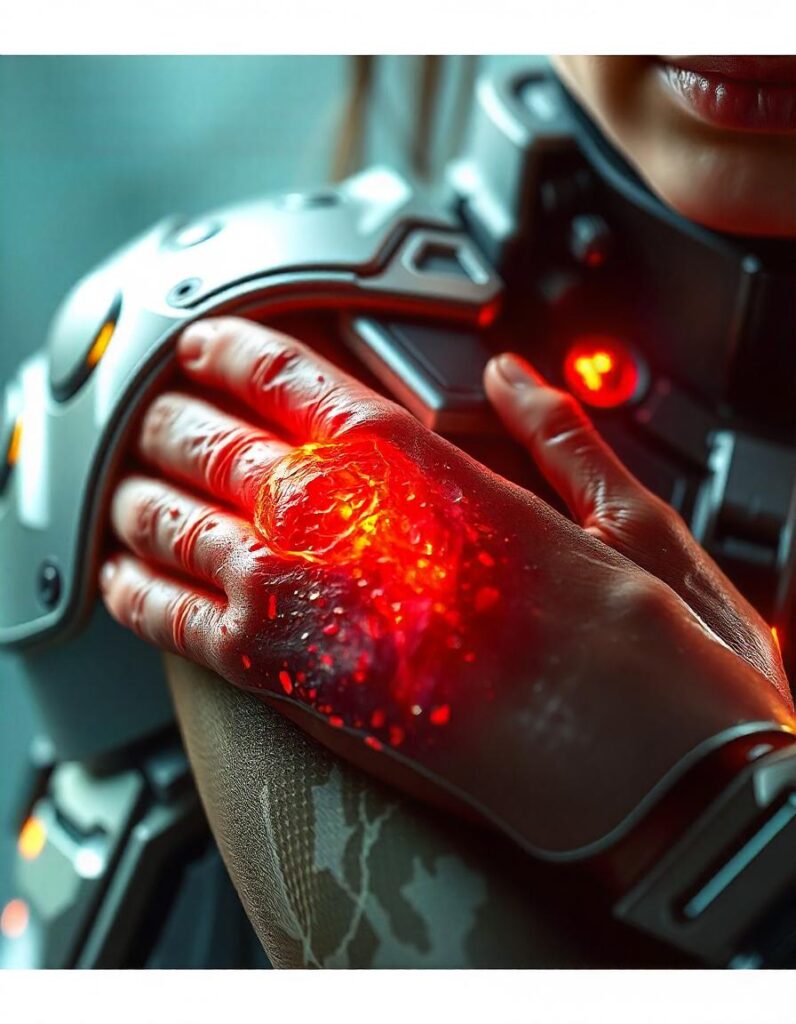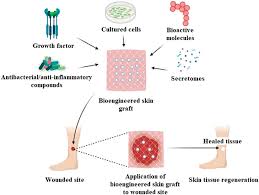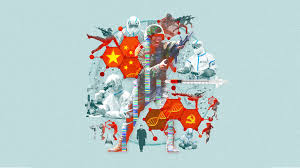
Introduction
A groundbreaking innovation in military medicine, the Bio-Synthetic Regeneration Suit (BRS) is envisioned as a next-generation combat suit designed to heal wounds in real-time using bio-engineered materials and nanotechnology. This futuristic exosuit would integrate self-repairing fabric, embedded AI medical diagnostics, and bio-synthetic gel dispensers to accelerate wound healing on the battlefield. Although still conceptual, advancements in biotechnology, AI, and nanomedicine suggest that such a system could become a reality in the near future.
How BRS Works
The Bio-Synthetic Regeneration Suit would function through:
- Self-Healing Fabric: A smart nanofiber material capable of repairing itself after minor damage, reducing wear and tear in combat.
- AI-Driven Medical Diagnostics: The suit monitors the soldier’s vitals, detects injuries, and automatically administers medical treatment.
- Bio-Synthetic Healing Gel: The suit contains microscopic bio-gel injectors that dispense stem-cell-infused healing compounds to repair wounds faster than traditional methods.
- Temperature and Hydration Control: Embedded sensors regulate body temperature and hydration levels to maintain peak physical performance.
Potential Applications

1. Instant Wound Healing in Combat
Soldiers wearing the BRS could receive automated first-aid treatments in real-time, preventing excessive bleeding and reducing battlefield fatalities.
2. Enhanced Soldier Endurance
With adaptive temperature control, hydration balance, and oxygen regulation, soldiers could operate in extreme conditions without fatigue.
3. Bio-Integrated Exoskeleton Support
Lightweight, bio-compatible exoskeletal enhancements could provide additional support for mobility and strength, reducing injuries from physical strain.
4. Rapid Adaptation to Environments
The suit could use dynamic camouflage to blend into surroundings, reducing visibility in enemy zones and enhancing stealth operations.
Challenges and Ethical Concerns
- Bio-Material Availability: The production of synthetic bio-gels and self-healing materials needs further development.
- AI-Controlled Medical Decisions: Ethical concerns may arise about AI making life-or-death medical decisions without human intervention.
- Cybersecurity Risks: If hacked, the suit could be manipulated to disable soldiers instead of healing them.
- Long-Term Effects: The impact of continuous AI-driven medical interventions on human physiology remains unknown.
Future of BRS

The future of Bio-Synthetic Regeneration Suits could involve:
- Integration with Neural-Linked Combat Systems (NLCS) for AI-assisted healing.
- Personalized Bio-Enhancement Programs tailored to individual soldiers’ genetic and medical profiles.
- Smart Adaptive Medical AI that learns from previous injuries to optimize future treatments.
Conclusion
The Bio-Synthetic Regeneration Suit (BRS) could revolutionize battlefield medicine and soldier endurance, turning traditional injury recovery into an automated, real-time healing process. While still a conceptual innovation, rapid progress in biotechnology, AI, and material science suggests that such suits may become a standard feature in future military operations, drastically reducing combat fatalities and improving soldier performance in extreme environments.

